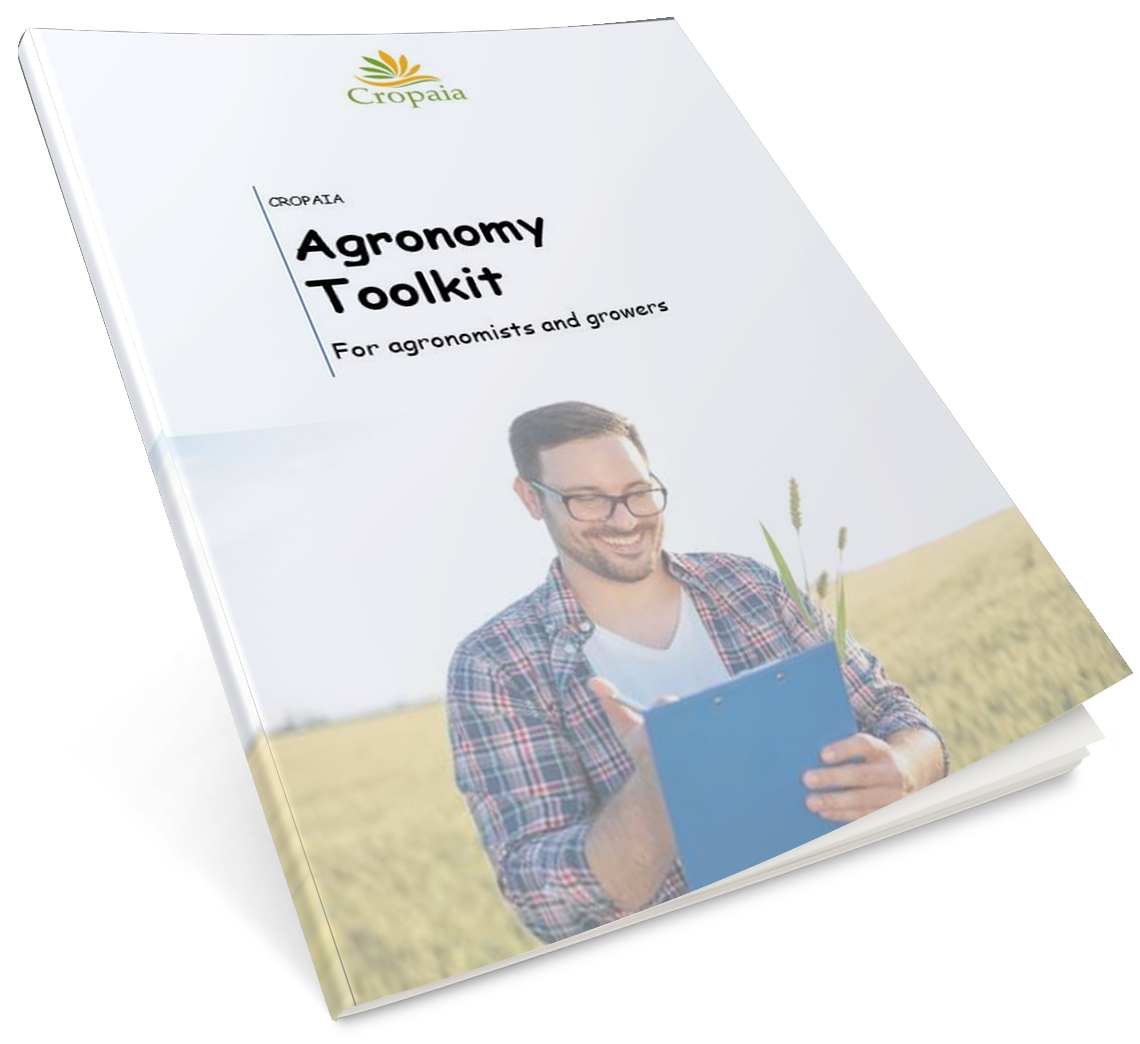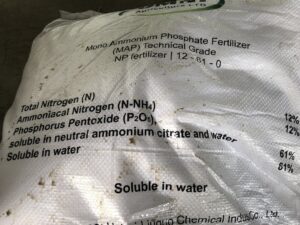How to calculate fertilizer application rates
Understanding how to calculate accurate fertilizer application rates is crucial for achieving optimal crop growth. This process involves several key factors:
Nutrient Application Rate: Determining the correct rate of nutrient application is essential. This rate, often guided by nutrient recommendations, dictates how much of a particular nutrient needs to be applied to your fields. It’s typically expressed in pounds per acre (lbs/acre) or kilograms per hectare (kg/ha), depending on your region’s standard measurement system.
The nutrient recommendations are based on several factors, including crop nutrient uptake, soil analysis results, and the mineral content of irrigation water. They provide a tailored guideline for nutrient application to support your crop’s health and productivity.
Fertilizer Grade/Composition: Knowing the composition or grade of your fertilizer is another vital step. This refers to the guaranteed nutrient content within the fertilizer, which is usually listed as a percentage by weight on the product’s label. Understanding this allows you to choose the right fertilizer type for your crop’s specific nutrient needs.
Field Area Measurement: The size of the area to be fertilized impacts the total amount of fertilizer needed. Calculating your field’s area ensures that you apply the correct total volume of fertilizer, avoiding both under and over-application.
Furthermore, it’s important to recognize that nutrient requirements and fertilizer grades can be expressed in two forms: oxide form (common for some nutrients) or elemental form. Understanding the difference between these forms ensures an accurate calculation of fertilizer needs.
Incorporate these considerations into your fertilizer application strategy to significantly enhance crop yield and health.
Agronomy Toolkit – Free Download
Are you looking for helpful resources to improve your agronomic practices? This FREE download includes essential information such as unit conversions, soil and water analysis interpretation, and more. Simply click the button below to access the toolkit and start improving your agronomic knowledge today. Don’t miss out on this valuable resource!
Nutrients that are usually expressed in the oxide form include:
| Nutrient | Oxide form | Elemental form |
| Phosphorus | P2O5 | P |
| Potassium | K2O | K |
| Calcium | CaO | Ca |
| Magnesium | MgO | Mg |
However, total nitrogen, sulfur and micronutrients are usually expressed in their elemental form.
HOW TO READ THE FERTILIZER LABEL
The grade of a fertilizer usually refers to the percentage of the three major nutrients – nitrogen, phosphorus and potassium. It appears as three big numbers on the fertilizer label.
The first number is the total nitrogen concentration in the fertilizer, the second is the phosphorus concentration and the third refers to potassium.
In most countries, the content of phosphorus and potassium is indicated in the oxide form, not in the elemental form. Therefore, the grades refers to N-P2O5-K2O and not to N-P-K.
For example, a fertilizer with a grade of 13-10-27 contains 13% nitrogen, 10% of phosphorus as P2O5 and 27% of potassium as K2O.
A fertilizer with a grade of 46-0-0 contains 46% nitrogen only.
However, the grade alone does not always provide enough information about the fertilizer content.
Fertilizers may contain additional nutrients that are not indicated in the grade and, therefore, it is extremely important to review the fertilizer label.
The information on the fertilizer label includes the complete guaranteed analysis.
For example, the grade of ammonium sulfate is 21-0-0. Looking at the grade alone, one might think that this fertilizer contains only nitrogen. However, as the fertilizer’s name suggests, ammonium sulfate also contains 24% sulfur.
HOW TO CALCULATE FERTILIZER RATES
For solid fertilizers, you can use the following formula :
Fertilizer rate = required nutrient application rate X 100 / % nutrient in the fertilizer
Let’s see a few examples:
Example 1
A grower wants to apply 50 pounds of nitrogen to his 6 acres field, using Urea 46-0-0 fertilizer. How many pounds of urea he needs to apply?
Fertilizer application rate = 50 x 100 / 46 = 108.7 lbs
Example 2
A grower applied 80 kg of Mono Ammonium Phosphate (MAP 12-61-0) to his 5-hectares field. The grade represents the complete guaranteed analysis of the fertilizers.
Which nutrients did he apply? At what rate per hectare?
The first number of the fertilizer grade is the percentage of nitrogen in the fertilizer (12%).
The second number refers to the percentage of phosphorus as P2O5 (61%)
Therefore, nitrogen application rate can be calculated as follows:
80 = N x 100 / 12
N = 80 x 12 / 100 = 9.6 kg per 5 hectares or 9.6/5 = 1.92 kg/ha nitrogen
Calculating the phosphorus application rate:
80 = P2O5 x 100 / 61
P2O5 = 48.8 kg per 5 hectares or 9.76 kg/ha
For liquid fertilizers, the weight of the fertilizer must be accounted for, because the fertilizer nutrient content is given as percentage by weight.
For example, Urea Ammonium Nitrate (UAN), a liquid fertilizer with a grade of 30-0-0 contains 30% nitrogen by weight. The weight of UAN is 10.86 lbs. per gallon. Therefore, if a grower wants to apply 15 lbs. of nitrogen. How much UAN 30-0-0 should he use?
First, we can use the previous formula:
Fertilizer rate = Required nutrient application rate X 100 / % Nutrient in the fertilizer
Fertilizer rate = 15 x 100 / 30 = 50 lbs.
Since 1 gallon of the fertilizer weights 10.86 lbs:
50 lbs. / (10.86 lbs./gallon) = 4.6 gallons.
The formula for calculating liquid fertilizer rates becomes, therefore:
Fertilizer rate = (Required nutrient application rate X 100) / (% nutrient in the fertilizer x W)
Where W is the fertilizer weight.
The rise of artificial intelligence technologies enabled the creation of platforms such as yieldsApp, that can optimize fertilizer use. yieldsApp is the most innovative AI-based agronomic platform in the market. It uses proprietary artificial intelligence algorithms to provide farmers with recommendations for optimizing their crop yield and quality throughout all stages of growth, including tailored recommendations for fertilizer and pesticide applications.
[visual-link-preview encoded=”eyJ0eXBlIjoiZXh0ZXJuYWwiLCJwb3N0IjowLCJwb3N0X2xhYmVsIjoiIiwidXJsIjoiaHR0cHM6Ly9jcm9wYWlhLmNvbS9mZXJ0aWxpemF0aW9uLWFuZC1pcnJpZ2F0aW9uLWJvb2siLCJpbWFnZV9pZCI6MTUwNzQsImltYWdlX3VybCI6Imh0dHBzOi8vY3JvcGFpYS5jb20vd3AtY29udGVudC91cGxvYWRzL0Vib29rLW1vY2t1cDIwMjMuanBnIiwidGl0bGUiOiJGZXJ0aWxpemF0aW9uIGFuZCBJcnJpZ2F0aW9uIEJvb2sgLSBFeHBlcnQgR3VpZGUgfCBDcm9wYWlhIiwic3VtbWFyeSI6Ik9wdGltaXplIGNyb3AgbWFuYWdlbWVudCB3aXRoIHRoZSBmZXJ0aWxpemF0aW9uIGFuZCBpcnJpZ2F0aW9uIGJvb2suIExlYXJuIGFib3V0IHNvaWwgYW5hbHlzaXMsIGlycmlnYXRpb24gc2NoZWR1bGluZywgcGxhbnQgbnV0cmllbnRzLCBmZXJ0aWdhdGlvbiBhbmQgbW9yZS4iLCJ0ZW1wbGF0ZSI6ImJhc2ljIn0=”]





